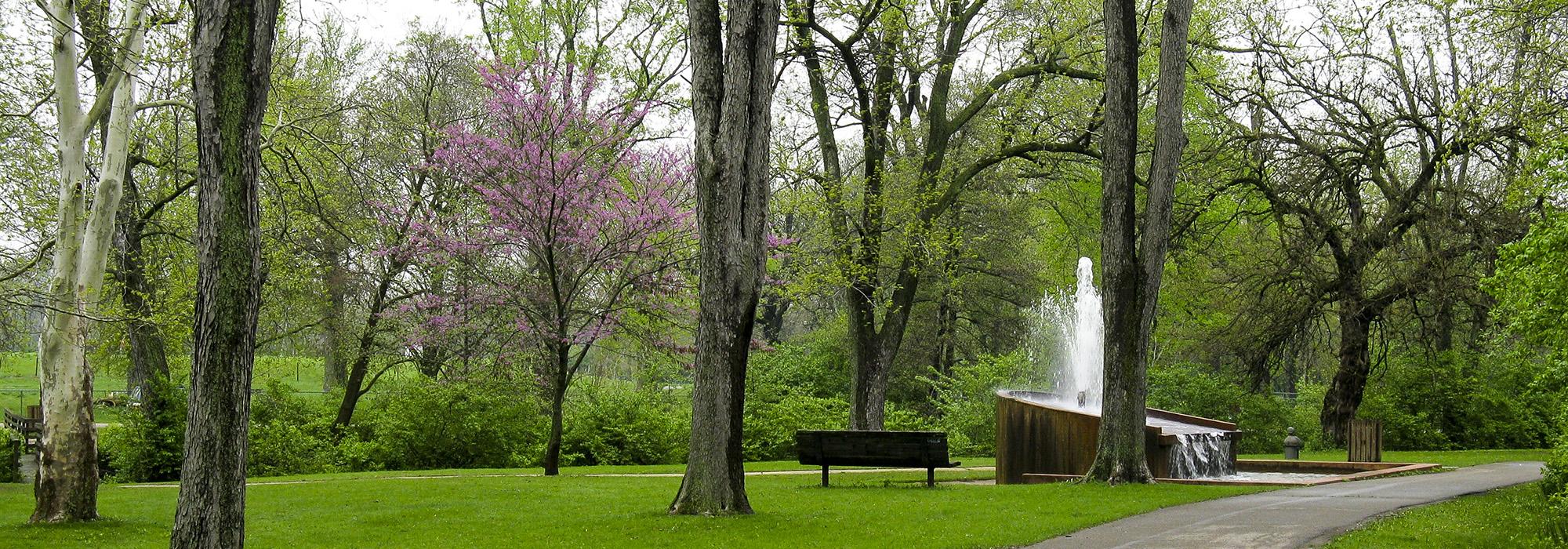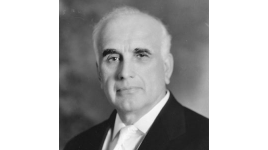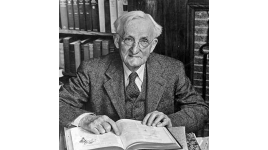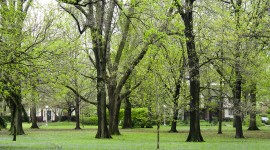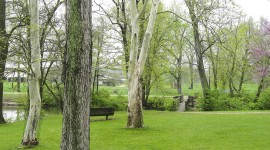Joseph C. Blair Biography
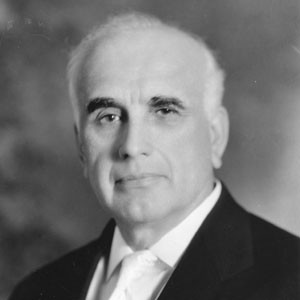
Blair was born on April 26, 1871, in Onslow, Nova Scotia. He received a B.S. in agriculture from Cornell University in 1896 under the tutelage of Liberty Hyde Bailey, whose voluminous publications range in subject from the multiplication of plants and the care of fruit trees to the meaning of democracy and the improvement of domestic grounds. Upon graduation from Cornell in 1896, Blair was readily appointed as an instructor of horticulture at the University of Illinois, where he would remain for 43 years. Advancing rapidly, he became an assistant professor by 1898, and a professor three years later.
Blair conducted research in pomology (the science and study of cultivating fruit) and published extensively on orchard management. In addition to his research and teaching, he engaged in community development and park planning, and he worked to establish the study of landscape architecture at the university, procuring library materials and hiring faculty to support a curriculum distinct from that of horticulture.
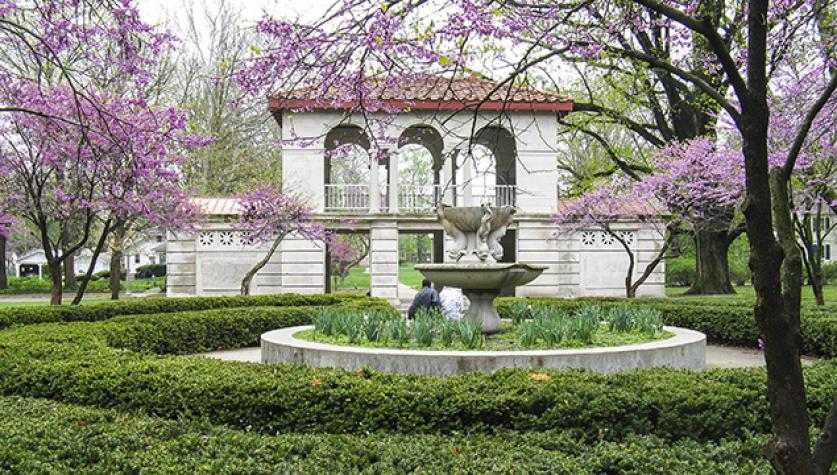
The first books in landscape gardening at the University of Illinois had been purchased as part of the library’s founding collection in 1867 by Regent John Milton Gregory. In 1870, the Department of Horticulture was established, and titles in the library’s landscape-gardening collection grew commensurately in the areas of ornamental horticulture and plant materials. From 1880 to 1894, several titles in the newly formed field of city planning were added, including George Waring’s Village Improvements and Farm Villages (1877), Samuel Loomis’ Modern Cities and Their Religious Problems (1887), and William Fletcher Goodhue’s Municipal Improvements: A Manual of the Methods, Utility, and Cost of Public Improvements, for the Municipal Officer (1893).
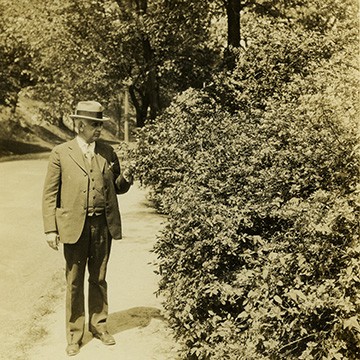
When Blair joined the Department of Horticulture in 1896, the construction of a new library was underway and funding was increased for expanding the landscape-gardening collection. Blair was integral in guiding the expansion of the collection, which reflected a growing distinction between horticulture and landscape gardening. He formalized that distinction when he hired Alanson Phelps Wyman to teach courses in landscape gardening in 1904. Phelps was a fellow Cornellian with a B.S. in agriculture, who had taken courses in landscape engineering and architecture at the Massachusetts Institute of Technology prior to joining the faculty at the University of Illinois. In 1912, the Division of Landscape Gardening was created and an additional professor, Ralph Rodney Root, was hired by Blair and Phelps. Trained in Harvard’s seminal program in landscape architecture, Root contributed to the Division’s burgeoning focus on design and the study of landscape architecture per se.
In 1913, Blair recommended the appointment of Charles Mulford Robinson as professor of civic design. This was perhaps the first such appointment in the nation, and it is often cited as the point of origin for the present-day Department of Urban Planning at the University of Illinois. Students in the newly formed Division of Landscape Gardening were required to take Robinson’s course on civic design—further evidence of an expanded curriculum that had begun to distinguish between landscape gardening and ornamental horticulture. By 1916, the first baccalaureate degrees in landscape architecture were conferred at the University of Illinois, and the new department continued to flourish through a hybrid curriculum in horticulture, city planning, and landscape design. As at other land-grant universities, landscape architecture at the University of Illinois thus evolved from the study of horticulture, and Blair’s library acquisitions remain as a subtle reminder of that evolution.
Although he was without formal training as a designer, Blair nonetheless designed parks and urban grounds in the City of Urbana and elsewhere in Illinois. He completed projects throughout Urbana, including the layout of Carle Park, the plantings and swimming structures at Crystal Lake Park, the plantings at Victory Park, and the planting of street trees in the city’s University Heights neighborhood. It is estimated that Blair was responsible for the planting of more than 6,000 trees throughout the Urbana-Champaign area during his lifetime. While it remains unclear exactly which of the extant trees he planted, many of Urbana’s streets, parks, and natural areas are no doubt testimonies to Blair's legacy.
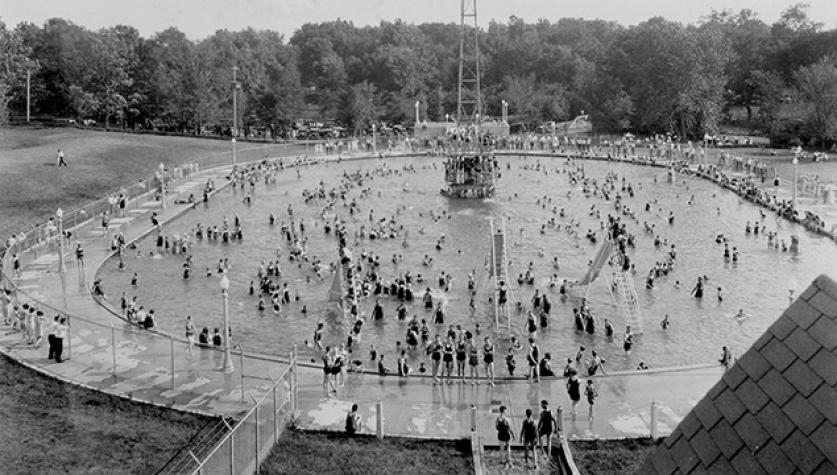
Blair was instrumental in founding the Urbana Parks District in 1907, and served as its commissioner for over 40 years. He lectured and lobbied across the state to establish Massac State Park in 1908, the first of Illinois' state parks, for which he is remembered as the 'Father of the Illinois State Park System.' He was elected president of the Illinois Association of Park Districts in 1928. In 1944, the Urbana Parks District honored Blair by establishing Blair Park, purchased by the district in anticipation of the expansion of Urbana in the post-War period. Blair died in 1960, sixteen years after the park was named in his honor, and with enough time to witness the growth of Urbana and his beloved urban forest.
Bibliography
Mancuso, Dana, ed. A Century Of Growth: The Urbana Park District's First 100 Years. Urbana: Urbana Park District, 2007.
Ravenhall, Mary D. “Aggies in the Library: the Beginnings of the Landscape Architecture and City Planning Collection at the University of Illinois, 1867-1924.” Landscape Journal 8, no. 2 (1989): 111-21.



